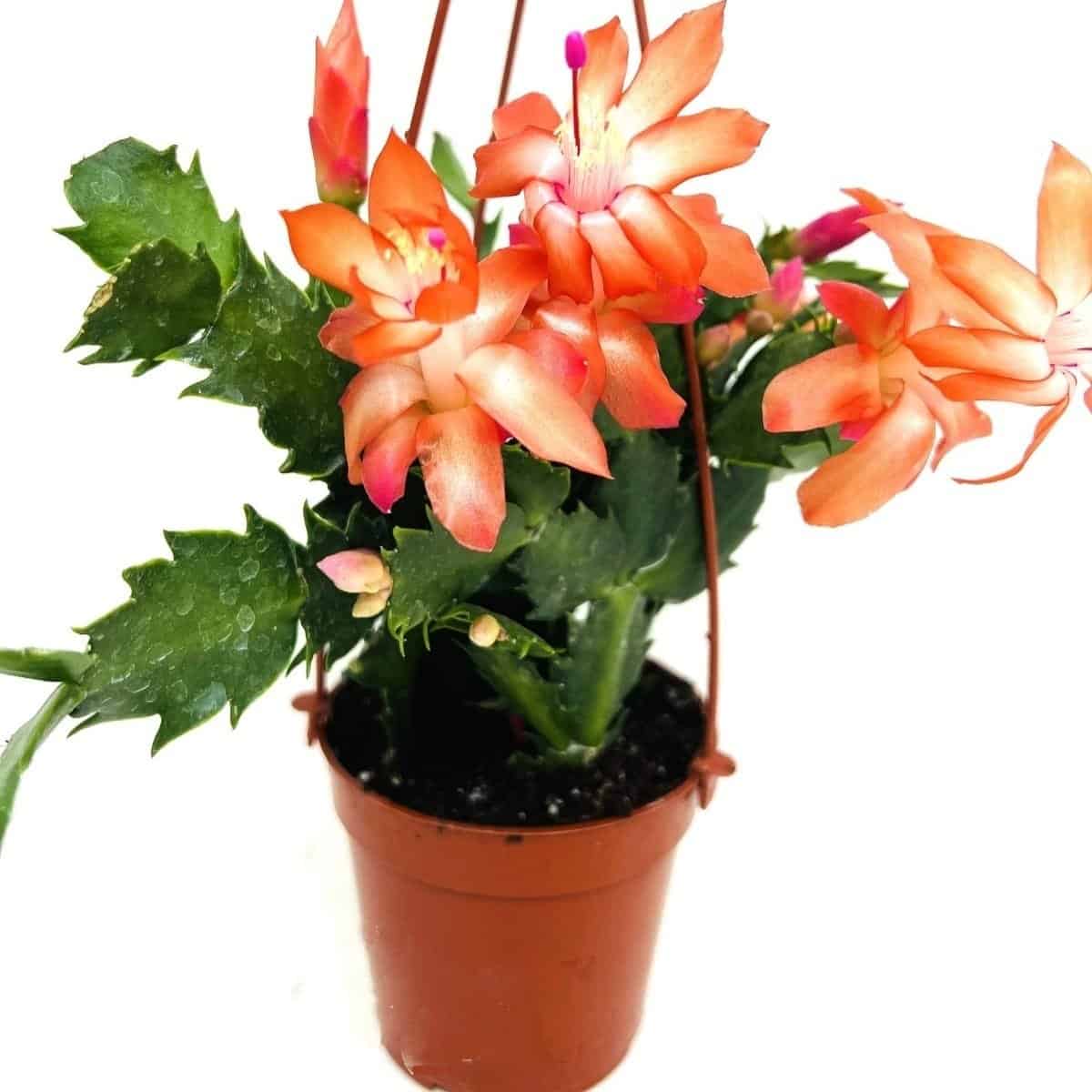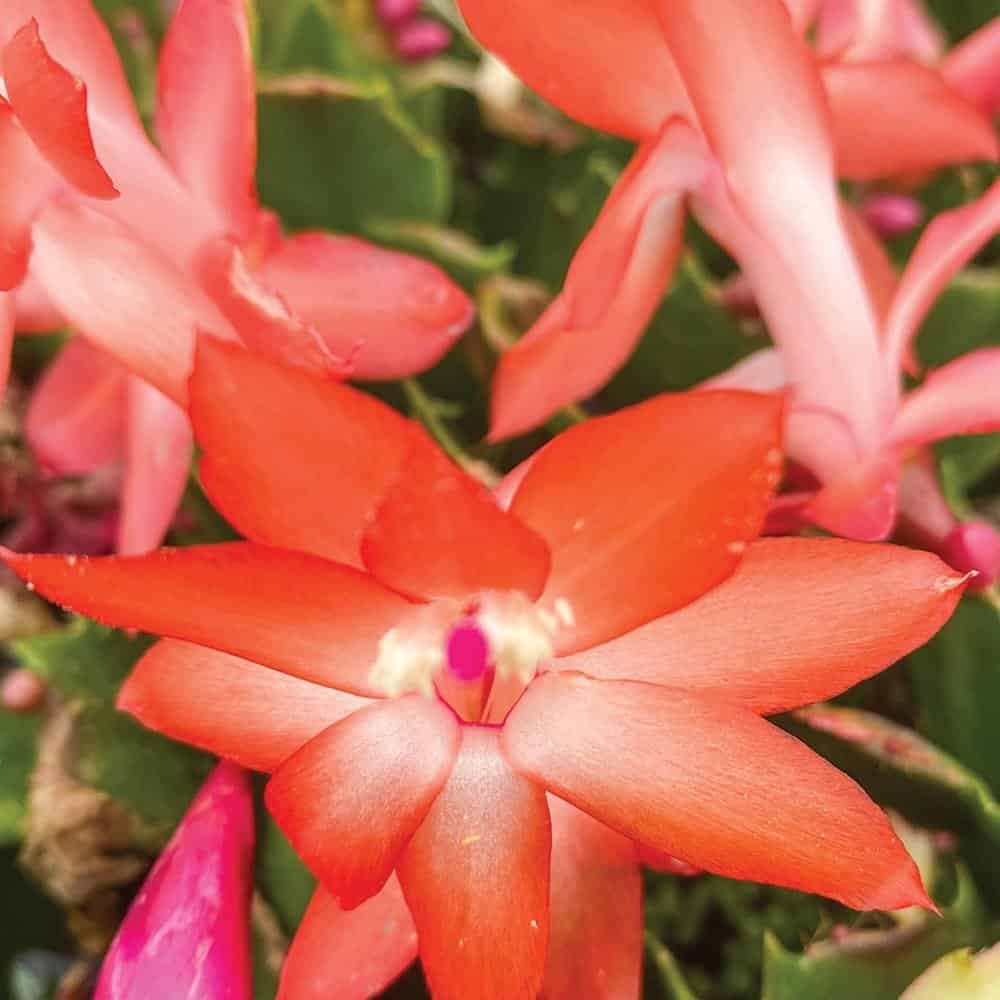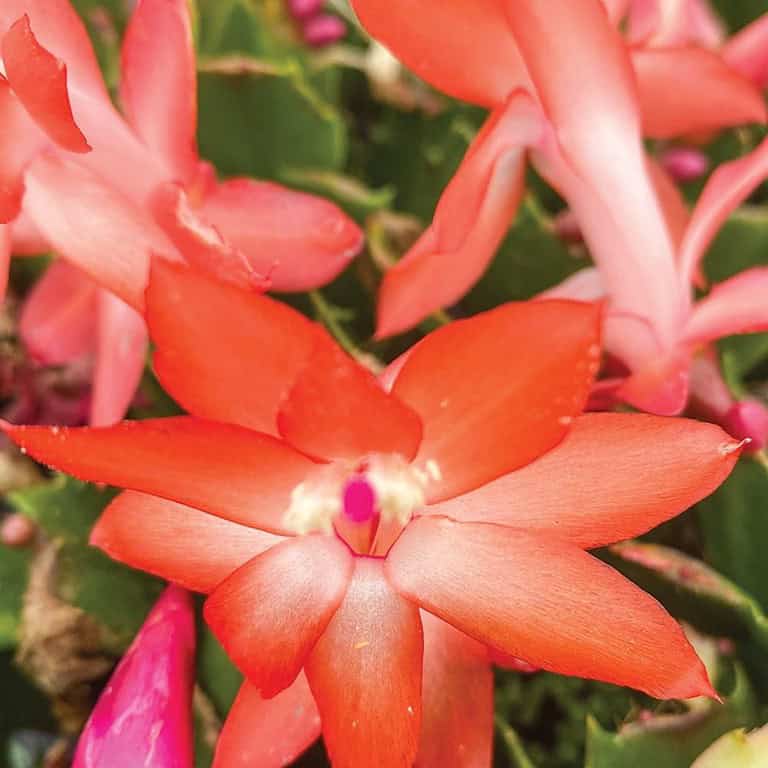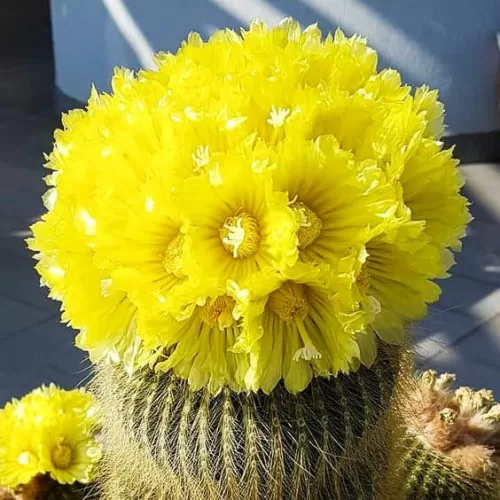Zygo Cactus or Schlumbergera is a small genus of cacti with six to nine species found in the coastal mountains of south-eastern Brazil. These plants grow on trees or rocks in habitats that are generally shady with high humidity, and can be quite different in appearance from their desert-dwelling cousins.
How to Care for Zygo Cactus
A lack of water and dramatic temperature swings can cause flower buds to drop more rapidly. Maximize your specimen’s blooming period by paying attention to these six key factors:
Soil: Use a quality soil rich in humus and other nutrients.
Temperature: Maintain an optimal climate of 20 degrees Celsius.
Watering: Keep the soil evenly moist while your plant is blooming, misting it frequently.
Light: Place the cactus in an east-facing window for moderate light and some direct sun.
Fertilization: Apply a high-potassium fertilizer every two weeks once buds form.
Transplantation: Repot your cactus each year after flowering.
Common Zygo Cactus Pests
While Zygo cacti are typically low-maintenance plants, they aren’t immune to pests and diseases. If you find your plant has been invaded by pests, Gardening Know How shares ways to avoid some of the most common types.
Mealybugs: These insects typically infect indoor plants. They have cottony masses that make them easy to detect and can attract mold if left alone over time. Pick them off with a toothpick or use a systemic insecticide formula to get rid of them.
Spider mites: While you may be unable to detect these tiny insects on your cactus, their webbing on the leaves makes their presence known. These dust-liking creatures can be removed using insecticidal soap spray.
Fungus gnats: Not only are these insects tiny, but they also fly and love soggy soil. You may notice a loss of leaves if the infestation is large. If insecticidal soap spray doesn’t work, fill a clean pot with fresh and well-drained potting mix before repotting.
How to Encourage More Blooming
Keep plants cool (around 10 degrees Celsius) following their blooming period. Water them to keep the soil just barely moist, and be sure to withhold fertilizer. When new growth begins, use the following strategy to encourage blooming: House the plants in an environment with a temperature between 14 and 20 degrees celsius, and alternate between giving them 10 hours of light and 14 hours of total darkness for four to six weeks after the growth appears. When buds appear, introduce the plant to warmer temperatures and begin regular culture, as described above. Plants should bloom in about six weeks.
How to Repot a Zygo Cactus
Your festive greens only need to be repotted every three to four years. Take notice if the roots start to grow out of the container’s bottom or if its overall appearance looks weary.
Tip ?: Never repot your Zygo cactus while it’s blooming.
Choose the right container. Pick a pot that’s slightly larger than your older one. Make sure it has a drainage hole at the bottom, since your Zygo cactus will rot if it lacks air.
Make sure your potting mixture is lightweight and well-drained. Never use soil that comes directly from your garden, says Plant Care Today, since it could contain bacteria and viruses that would harm your plant.
Repot your Zygo cactus. After the gentle removal of your plant, massage the roots to remove old soil, then place it inside the new container so the “top of the root ball is about an inch (2.5 cm.) below the rim of the pot,” according to Gardening Know How.
Water your plant moderately and put it in a shady location for two to three days, as an excess amount of direct sunlight can damage the leaves.






































































































































































Reviews
There are no reviews yet